History of food delivery and how it’s changed
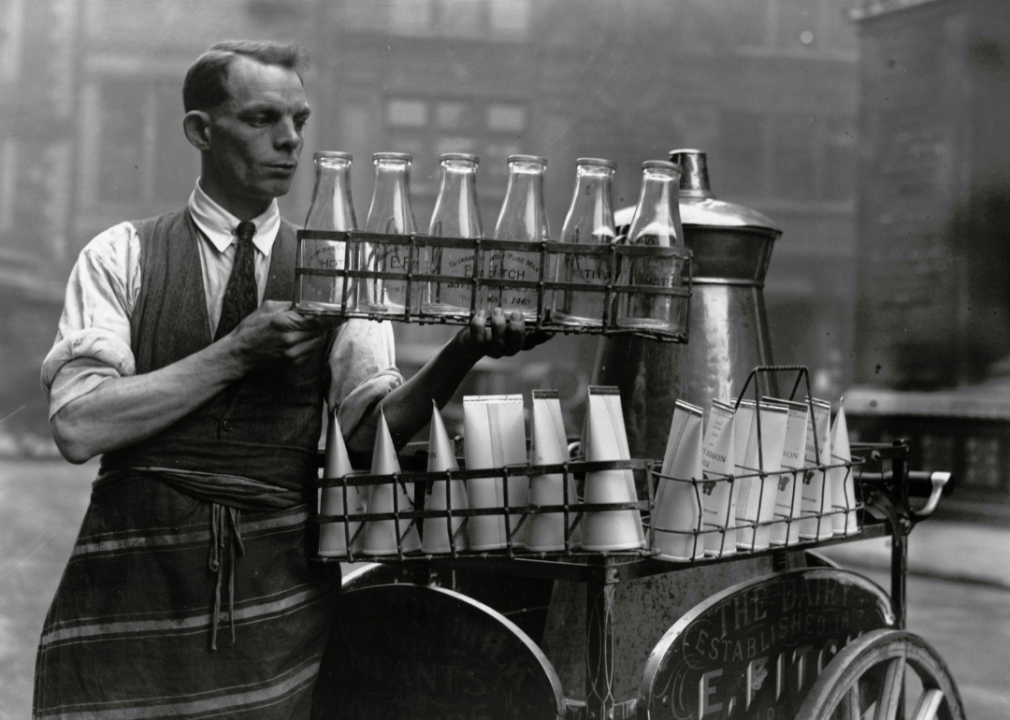
Fox Photos // Getty Images
History of food delivery and how its changed
To order takeout from your favorite restaurant from an app on your phone may seem like a distinctly modern phenomenon. But food delivery has a history that extends far further back than the smartphone era. A pair of Italian royals in the 19th century are widely considered to be the first pizza delivery customers. And in the 130 years since that fateful time, the history of food delivery has largely mirrored broader historical trends. Wars, technological advances, and shifting forms of labor and work have all played a role in determining how and when people order food to be delivered.
What’s on the horizon for food delivery? Only time will tell, but one clue may be found in the increasing number of people who are interested in nutrition, and how the food that they eat influences the way they feel. Thistle compiled a list of 10 major milestones in the history of food delivery using primary and secondary historical sources. Click through for a look at how food delivery has evolved over the past 130 years.
![]()
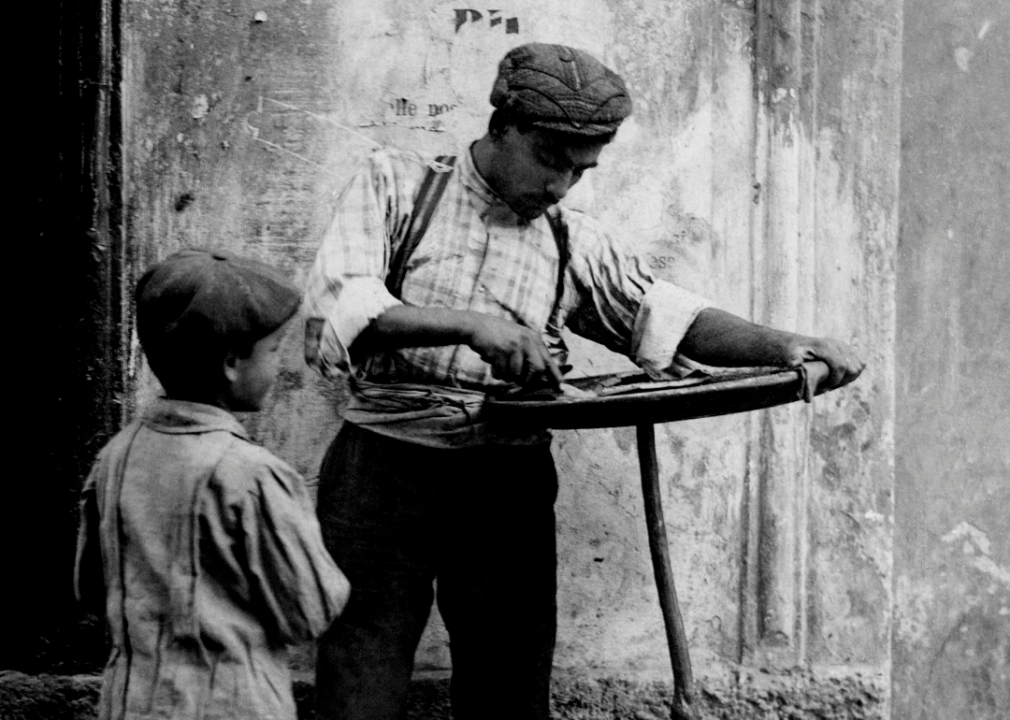
Touring Club Italiano/Marka/Universal Images Group via Getty Images
1889: The first pizza is delivered
In 1889, the first pizza delivery took place in—where else? Italy. King Umberto and Queen Margherita received the delivery. The pie in question came from the famous Pizzeria di Pietro e Basta Così. The Naples-based shop had created a new style of pizza, and wanted to make sure the royals got a chance to try it. So, when the king and queen came to the city, head chef Raffaele Esposito delivered it to them personally. Well over a century later, pizza is a mainstay of the delivery food ecosphere, from royals to commoners alike.
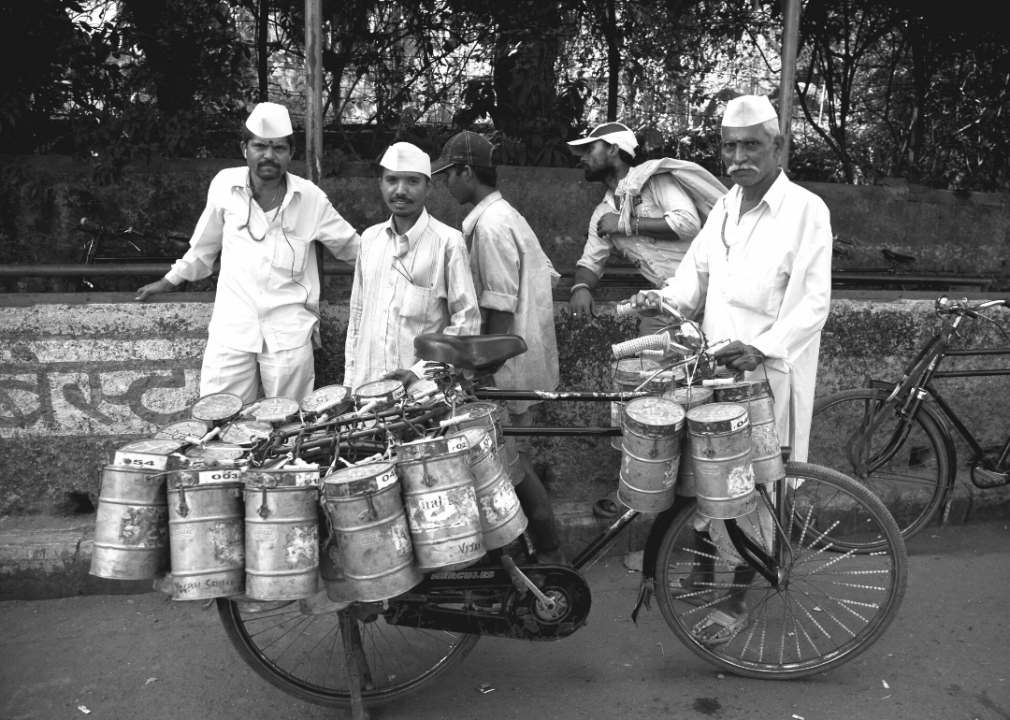
Christopher Pillitz // Getty Images
1890s: Dabbawalas deliver lunch to workers in India
In the 1890s, a food delivery system called dabbawala, or “one who carries the box,” sprang up in colonial India. Instead of going home for lunch, or leaving their job sites for food, the dabbawalas bring home-cooked lunches to workers directly in boxes collected from them. Dabbawala originated in Mumbai, and has since spread to other cities. And while the essential concept remains the same, dabbawala has evolved with the times to remain relevant today. Workers today can request lunches and put in orders through text or an app.

John Kobal Foundation // Getty Images
1922: Chinese food delivery arrives in America
Chinese food delivery made its debut in America in 1922. The Los Angeles cafe Kin-Chu called itself the “only place on the West Coast making and delivering real Chinese food.” The restaurant made use of the relatively new technology of telephones to fulfill orders. Customers could call to place an order, and the restaurant would deliver as late as 1 a.m. Almost a century later, Chinese food is a popular option for delivery, particularly during the holidays, when other restaurants may opt to close.

Debrocke/ClassicStock // Getty Images
1950s: Restaurant food delivery takes off
The popularization of television in the 1950s played a large role in the postwar boom of restaurant food delivery. With televisions in more and more homes, the concept of eating dinner from restaurants at home was established. Families could come home after long days at work and have their meals delivered to enjoy while watching their favorite television programs. This was particularly helpful for many families as the suburbs grew in popularity, and car ownership surged. People no longer necessarily lived nearby their favorite restaurants, and cars made delivery more convenient. Eager to capitalize on the trend, many restaurants even developed “television dinner” menus.
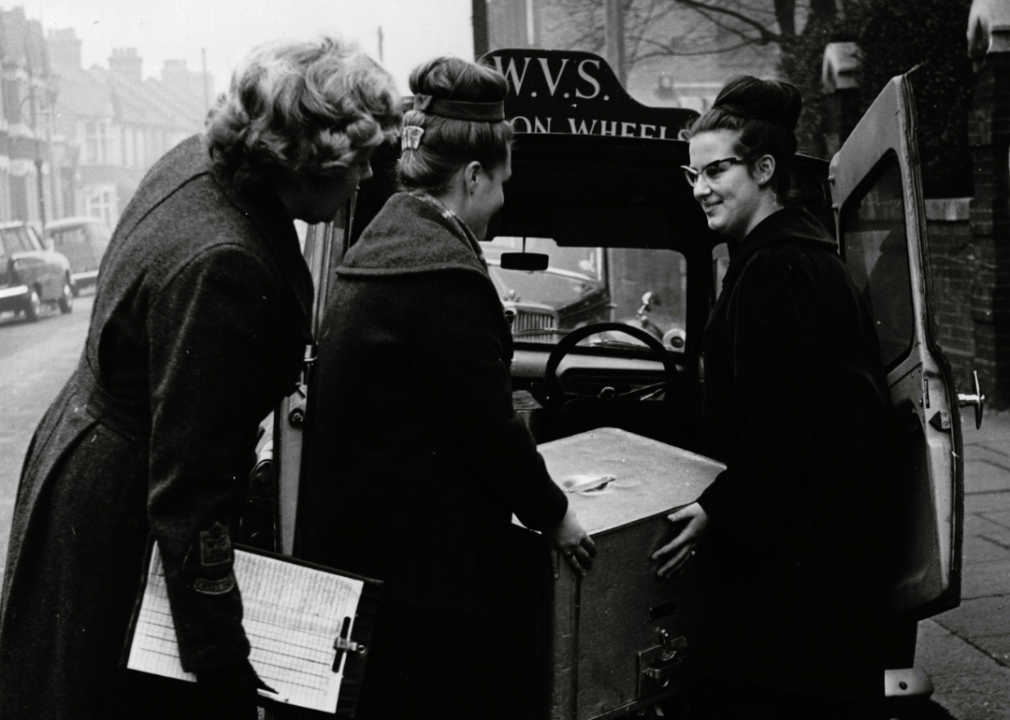
Harry Todd/Fox Photos // Getty Images
1954: Meals on Wheels launches
A new kind of food delivery was born when Meals on Wheels launched in 1954. The charity developed in Great Britain in response to the economic decline following World War II. Meals on Wheels delivered prepared food to homebound people who might not otherwise have access to food. The organization soon spread to other countries, including the United States. Meals on Wheels is still active today, delivering food to the homebound in cities around the world.
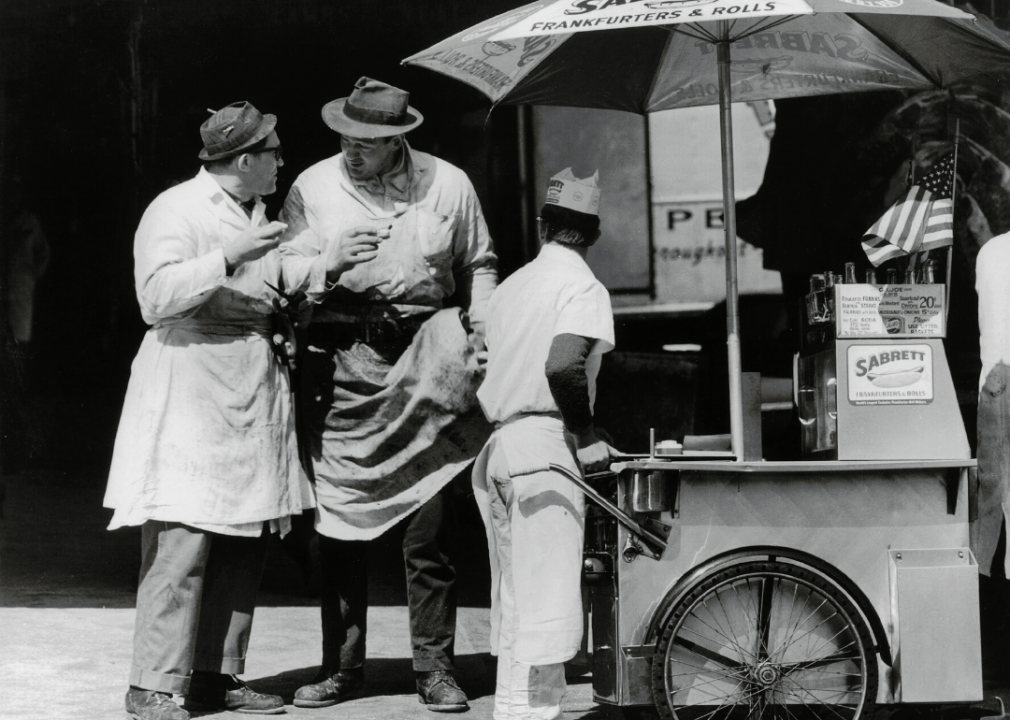
Sherman/Three Lions // Getty Images
1960s: Delivery speed improves
Thanks in part to the newfound ubiquity of cars, delivery times dropped in the 1960s. On the forefront of this innovation were the founders of Domino’s pizza. They developed a guarantee that pizza would be with clients within 30 minutes or less. The company would later be sued over this guarantee. Lawsuits claimed that 30 minutes was such a short delivery window that the company was encouraging unsafe driving.
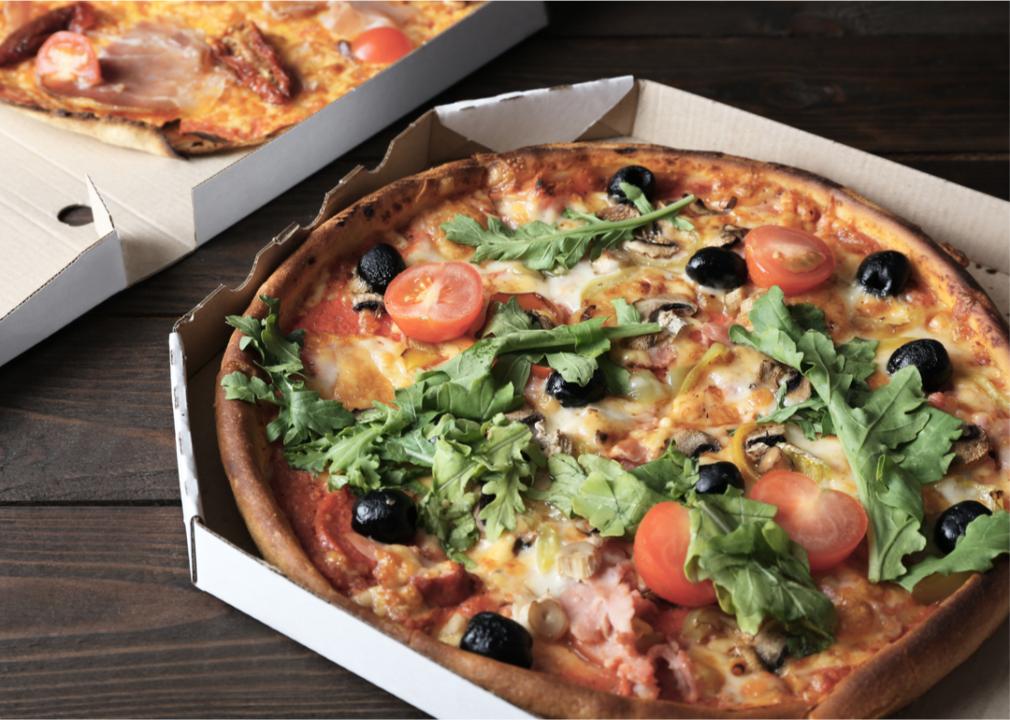
Africa Studio // Shutterstock
1994: Pizza Hut launches Pizzanet
In 1994, Pizza Hut debuted one of the earliest web-based food delivery sites. Pizzanet didn’t work across the country, but rather only for people located in Santa Cruz, California. Regardless, it provided an early model for digital food delivery. It was also one of the first public sites on the internet. With this in mind, pizza was most likely one of the first goods bought and sold online.
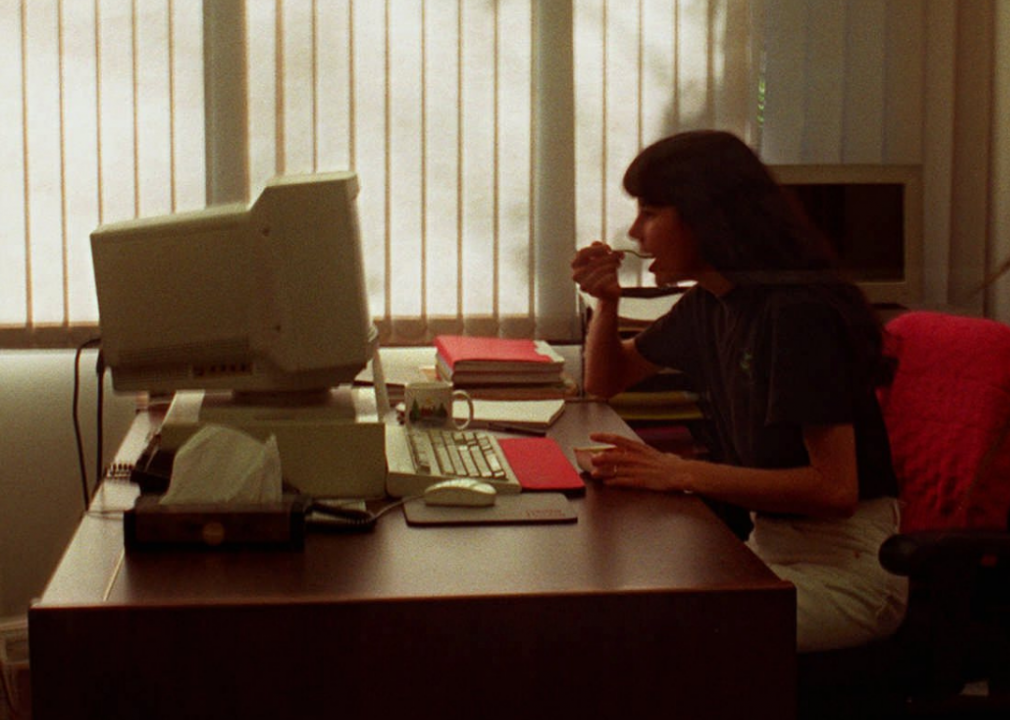
Meri Simon /MediaNews Group/The Mercury News via Getty Images
1995: World Wide Waiter goes online
In 1995, the first online restaurant delivery service launched. Called World Wide Waiter, the service aggregated more than 60 restaurants in the San Francisco Bay Area, and offered home or office delivery. One of the founders had surprising motivation for starting the company: While convenience and time-saving were nice, he said ordering food to his specs is what gave him the idea for World Wide Waiter. “I liked to order sandwiches made in a particular way,” he told a local newspaper at the time. “It occurred to me that specific orders by computers would be best.”
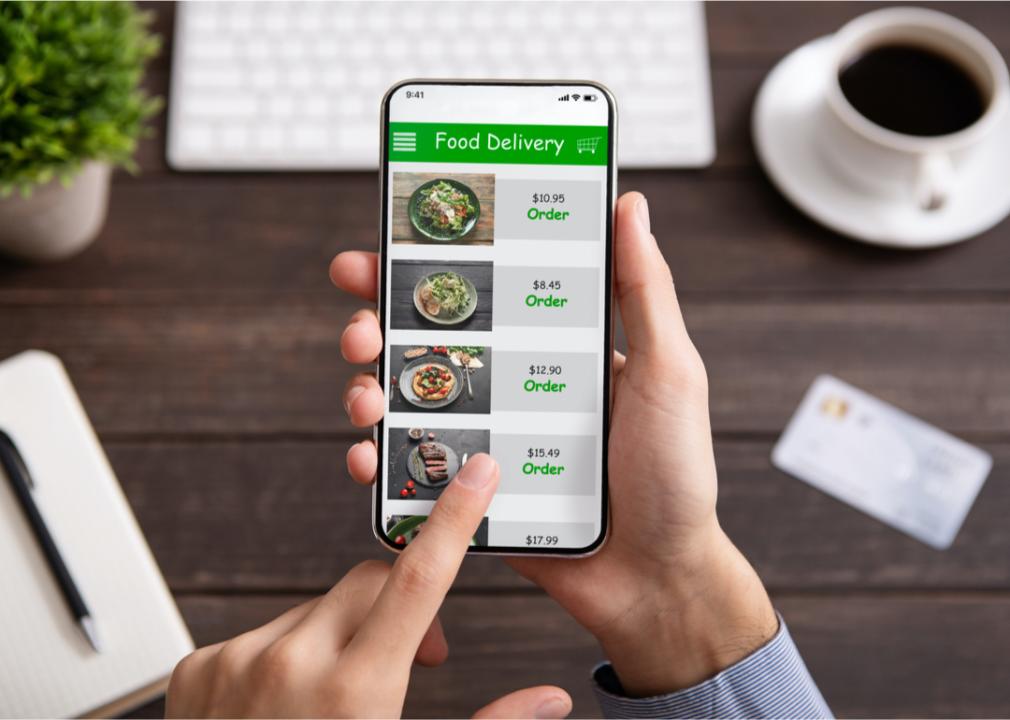
Prostock-studio // Shutterstock
2000s: Food delivery goes mainstream
In the 2000s, food delivery exploded in popularity. As smartphones became even more popular, food delivery apps came to dominate delivery services. Office workers could order food from their phones to the office without having to step away from their desks, and people who decided they’d rather not cook after work could have dinner solved with a few taps on their phones. New food delivery apps have been continually introduced since the early 2000s. Some specialize in upscale takeout from high-end restaurants, which helped some restaurants stay afloat during the pandemic.
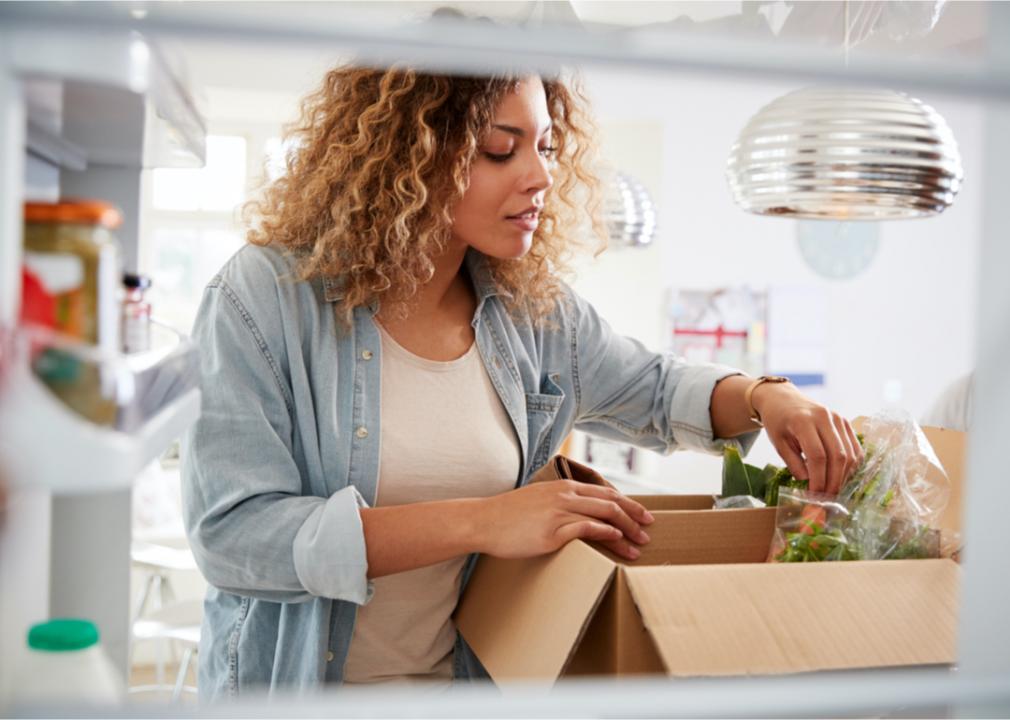
Monkey Business Images // Shutterstock
2010s: Meal kit delivery revolutionizes eating-in
In the 2010s, meal kits and ready-made meals made their way into many home kitchens. Some specialized in delivering all the ingredients for a meal to customers who might want to try their hand at cooking something new in the kitchen, but were intimidated by grocery shopping. Still others help consumers stick to speciality diets. This can give aspiring chefs inspiration for cooking future meals on their own, and can help people get used to a new diet without any of the legwork or stress that can go into learning a new way of cooking.
This story originally appeared on Thistle
and was produced and distributed in partnership with Stacker Studio.





